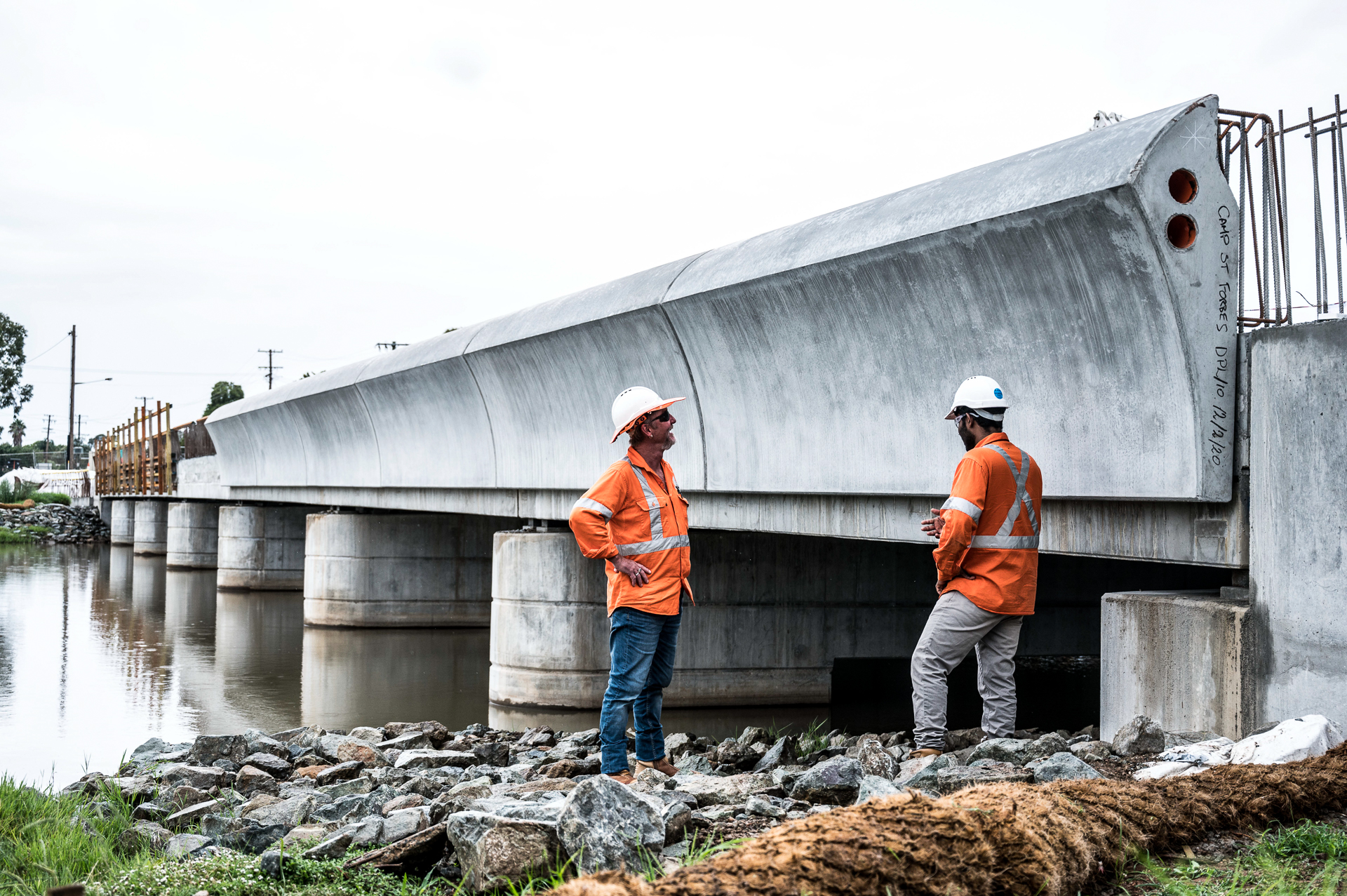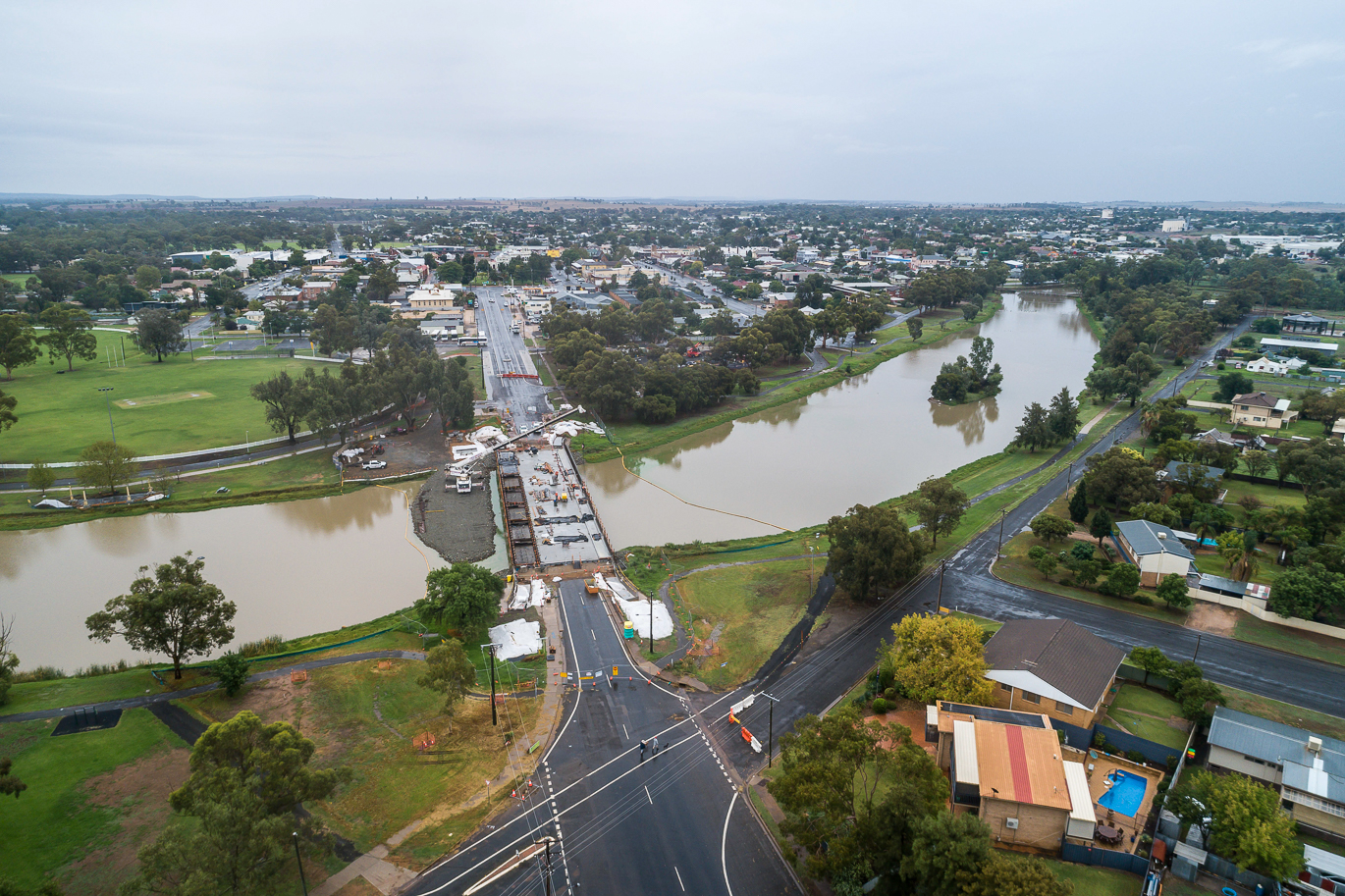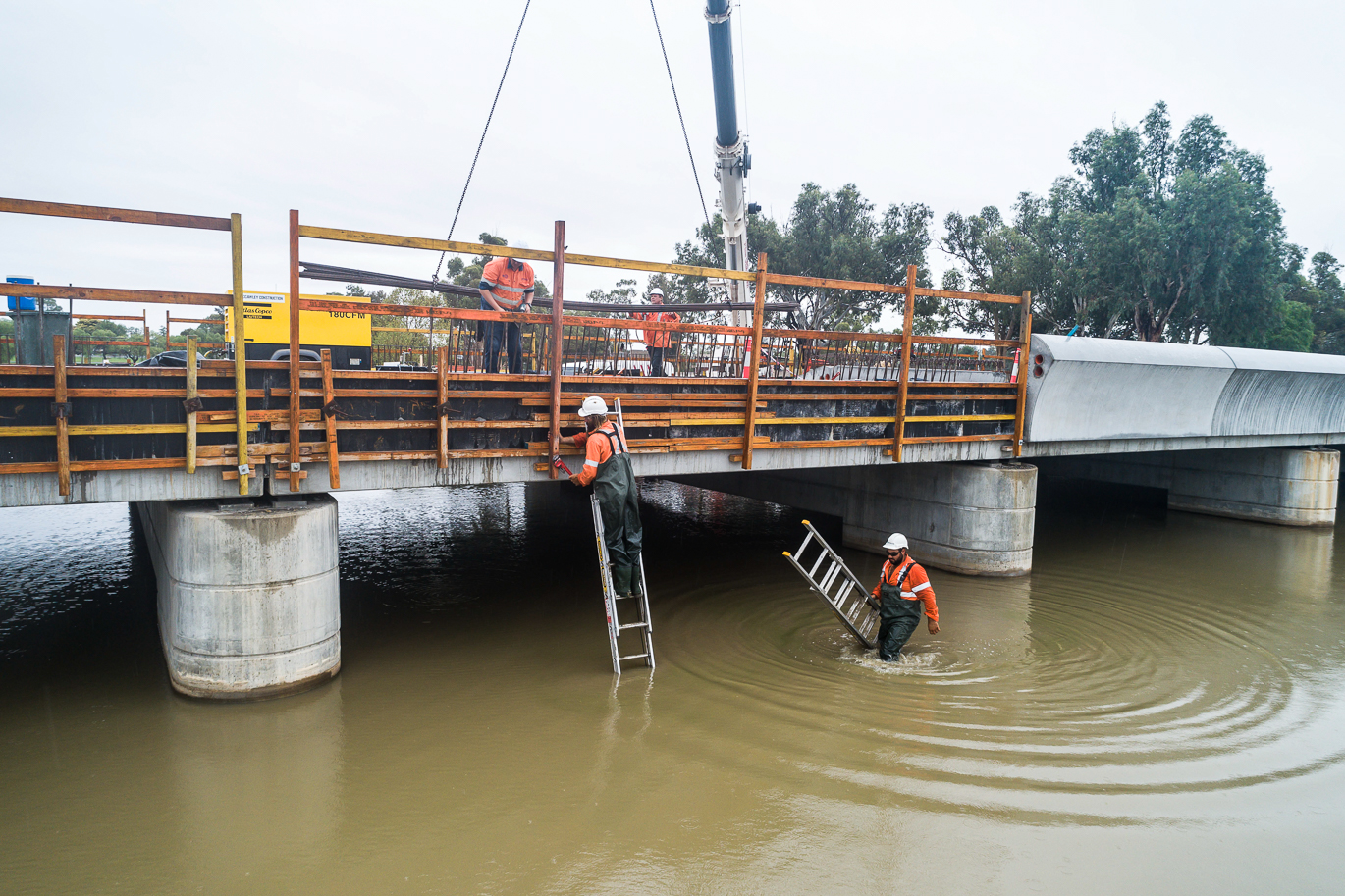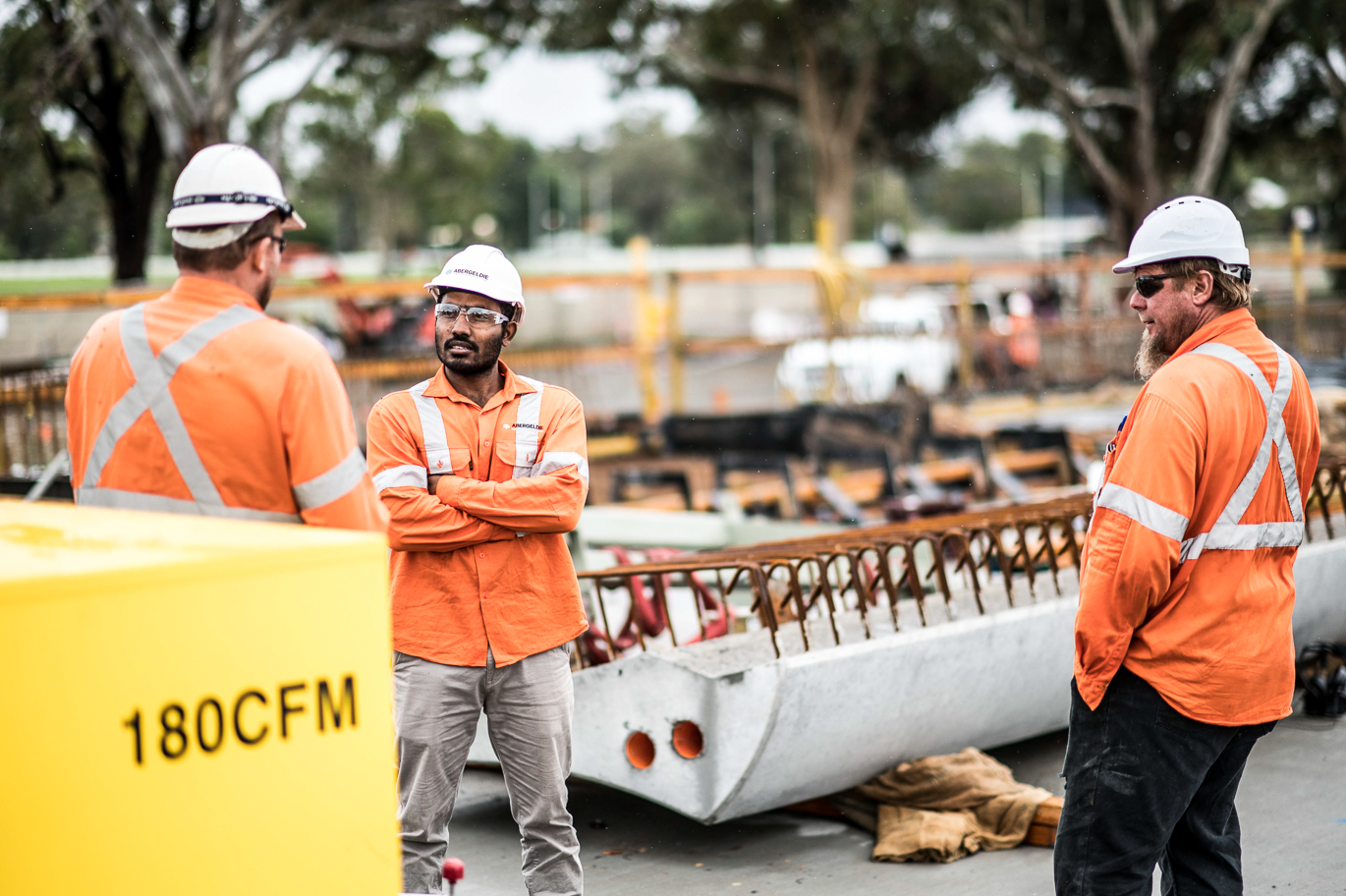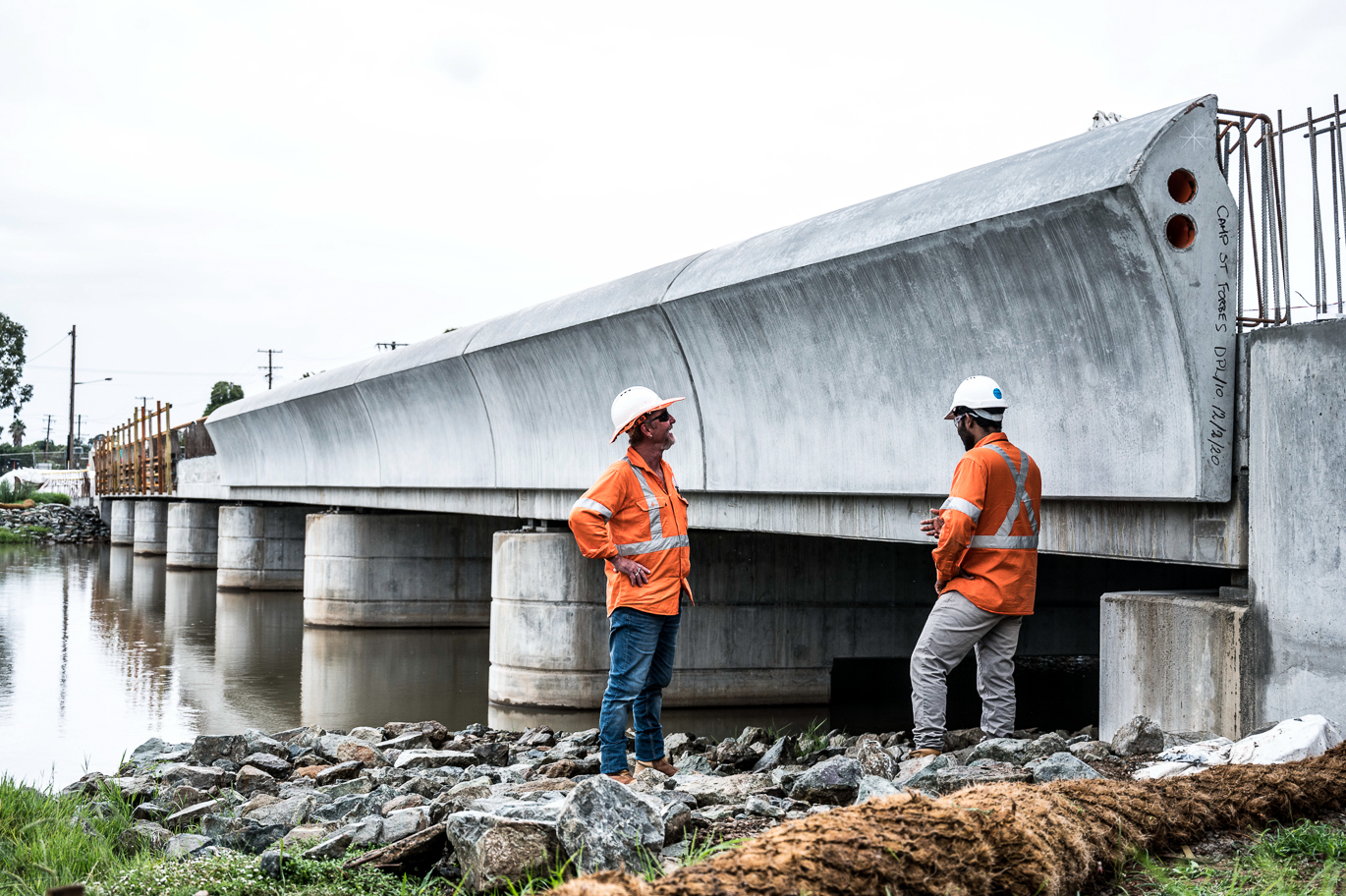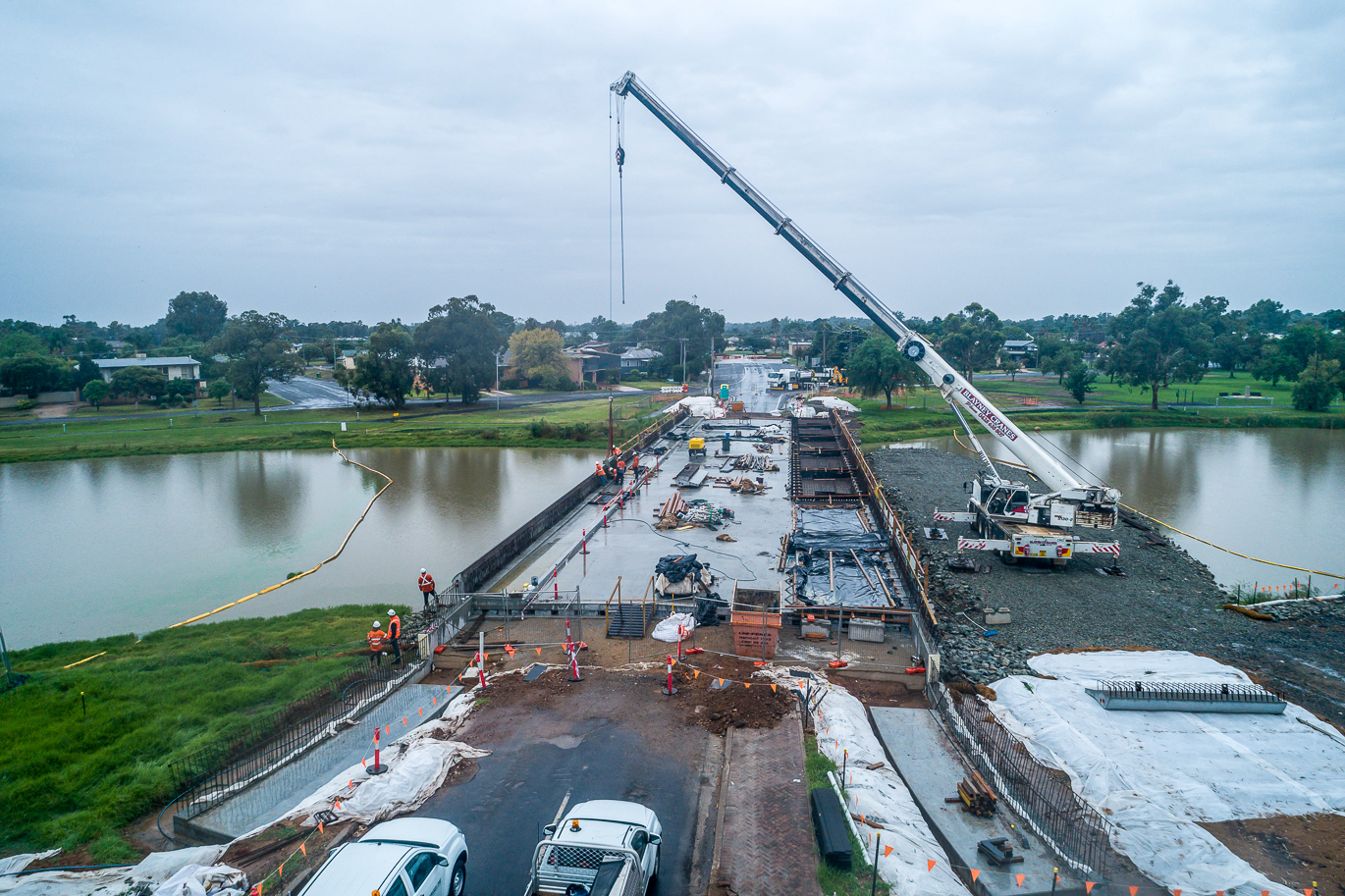new bridge constructed
year-old structure
shared paths constructed
existing bridge demolition
Abergeldie collaborated with Roads and Maritime Services (now Transport for NSW) to replace the Camp Street bridge over Lake Forbes to improve safety for road users and pedestrians. The project involved the removal of existing structures and the construction of a new wider bridge with wider lanes and pedestrian and cycle paths.
Scope of works
The works included:
- The demolition of the existing 60m, two-lane concrete bridge over Lake Forbes, involving nine spans, abutments, and eight RC trestle piers with five columns.
- The preservation of a heritage art deco light post during the demolition process.
- The construction of a new 70m bridge featuring 10m spans with two travel lanes, 1.5m wide shoulders, a 4m wide shared path, and a 2m wide footpath.
- Construction of 18 driven tubular steel pile casings of 900mm diameter, with concrete infill to support abutments and piers.
- Construction of six new concrete pier headstocks, abutment curtainwalls, and wingwalls.
- Manufacture and erection of precast pier skirts on site.
- Provision and installation of 19 pre-stressed precast concrete (PSC) planks for each span, totalling 133 PSC planks.
- Construction of the cast-in-place deck slab and approach slabs.
- Installation of precast reinforced concrete barriers on each side of the bridge and bridge deck drainage.
- Riprap rock scour protection.
- Installation, testing and commissioning of new street lighting, downlighting cablings and luminaries.
Complexity working in, above and over Lake Forbes
The construction of the Camp Street Bridge was highly complex, with the construction works taking place in, above and adjacent to Lake Forbes. Upon commencement, the local council reduced the water level of the lake through the downstream weir which allowed the team to build an access rock platform that was incrementally expanded and widened for the construction of the new bridge. To alleviate issues with changing water levels, a water pump was established downstream as a contingency.
Stringent environmental controls including silt books both upstream and downstream were put in place to mitigate the impact of construction works on Lake Forbes. To minimise noise and reduce dust impacting the community, a ‘cut and drag’ demolition technique was adopted.
Adding to the complexity of the construction were the bespoke parapets. As a key urban design feature of the project, it was important to get the parapet fabrication and installation right. The project team put in considerable effort during this task and took pride in the aesthetics that the parapets provided on the finished bridge.
Achievements
The Camp Street Bridge was officially opened to the public in July 2020 and serves as an important link in the centre of Forbes, for locals, visitors, and freight users. The finished project meets current design standards with wider traffic lanes, added pedestrian and cyclist paths and improved road approaches. More than 2,000t of concrete and 221t of steel were required to build the new 70m-long Camp Street Bridge, which was built from 133 precast concrete planks.
Detailed and precise staging along with innovative demolition and construction techniques, and effective resource scheduling resulted in the project being delivered three weeks ahead of the program with zero major non-conformances.
Throughout the project, local labour hire was sourced through a subcontractor, with several indigenous workers on site and an introduction to Sauce Towney, a local Wiradjuri Artist whom we later commissioned to create our first Reconciliation Action Plan Artwork which features in our REFLECT Reconciliation Action Plan. Local businesses also benefited from the project, supplying concrete steel, concrete pumping services and plant hire.
